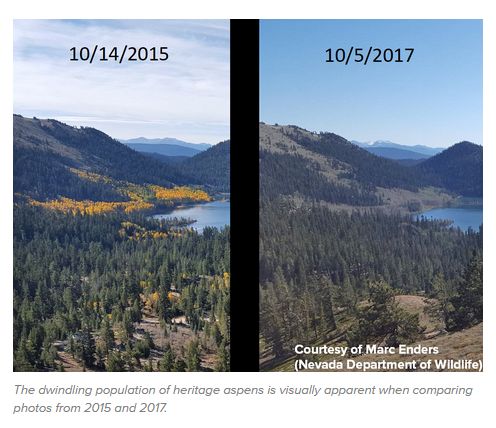
Tahoe State of the Lake: Heritage Aspens and the Threat of White Satin Moth
The annual Tahoe: State of the Lake report, by the UC Davis Tahoe Environmental Research Center, presents data from 2018 regarding lake clarity, temperature, snowpack, invasive species, algae, nutrient loads and more, all in the context of the long-term record. The report notes, “Climate change is expected to impact all aspects of the Tahoe basin in the coming decades.”
While much of the report is about the state of the lake itself, an interesting component is the severe defoliation that many aspen stands are facing due to white satin moth.
From the report:
In 2011, the white satin moth (Leucoma salicis) was first detected in North Canyon within the Lake Tahoe Nevada State Park. The moth’s (caterpillar’s) preferred hosts are native aspen trees (Populus tremuloides). Since 2011, the moth has spread northward and southward. Currently, there are numerous aspens stands that are experiencing severe defoliation as a result of these moths.



Some of these highly defoliated stands are in heritage sites that document the rich history of Basque sheepherding and resource management in the Lake Tahoe Basin.
The TERC Forest and Conservation Biology team has been surveying stands around the Lake Tahoe Basin. Through this process they have identified the presence of the moth in a new location on the west shore — in the lower Blackwood Canyon area.
Researchers are quantifying levels of defoliation in aspen stands throughout the Lake Tahoe basin, as well as examining host chemistry which may be an indicator of white satin moth susceptibility or tolerance. Additionally, they will be developing early detection monitoring and conservation strategies for aspens in the basin.
